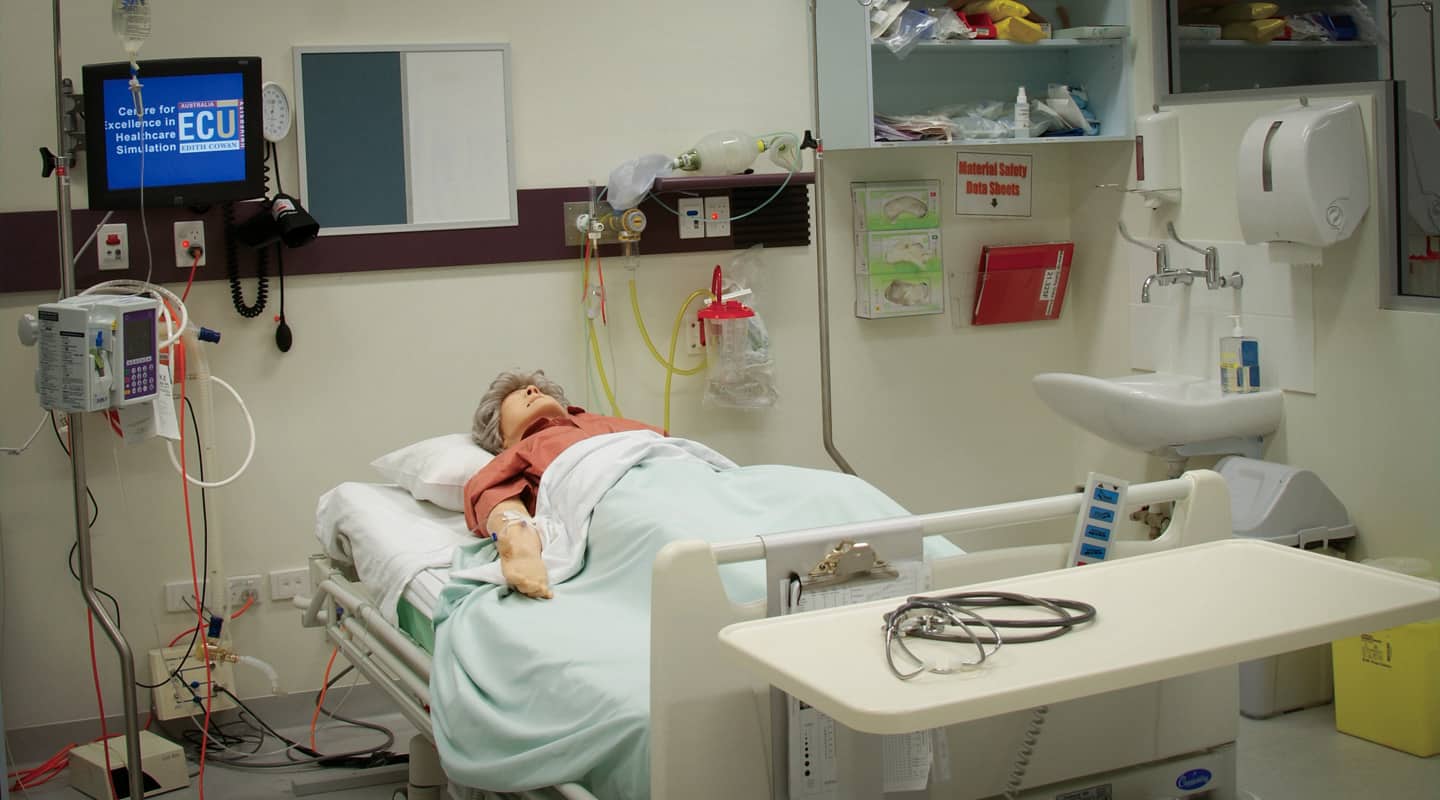
Sim City General
A patient that groans, burps and talks… but doesn’t sue. Relief is at hand.
Text:/ Graeme Hague
Photos:/ David Jones
Back in the good old days, medical students wanting to do a bit of hands-on homework would slip Igor a fiver, he’d creep into the local cemetery after midnight and come back with a recent corpse for the students to practice hacking away at to their heart’s content. No one really seemed to mind, it was all for a good cause. But, hey, that was the eighteenth century and the years have flown by. Authorities tend to frown on this sort of thing now.
The task of training the doctors and nurses of tomorrow has always presented an obvious problem. Eventually they need to try their hand at a real patient and if they bugger things up the consequences are… well, you can guess. For many years, trained actors have been employed to try and emulate patients and their symptoms, but they’re not keen on being operated upon just for practice. Selfish, really.
However, 21st century help is at hand.
At the Edith Cowan University (ECU), Joondalup Campus, in Perth they’ve dedicated a lot of funding and certainly foresight into the new Health and Wellness Building. This is the home of the School of Nursing, Midwifery and Postgraduate Medicine, which includes the Centre for Excellence in Health Simulation. Sharp-eyed readers will have noticed, among all the long-winded nomenclature, the word ‘simulation’ and, of course, AV magazine is soon sniffing around. What we found this time is some pretty amazing stuff.
There are three simulation suites in the facility, but before we look any closer at these I have to introduce you to the perfect patient. This patient talks, moans, burps, bleeds and quite regularly dies (only to be resuscitated again), but you’ll never see them calling for a second opinion or even a lawyer. And, they don’t have to eat hospital food. Meet the ‘human being simulator’ more commonly known as the ‘Sim Mannequin’.
These are life-sized mannequins that can emulate real people to an incredible degree or, to be more accurate, the symptoms of real, sick people. The mannequins at ECU, used in tandem with sophisticated software, provide a very realistic simulation of a human being suffering illness, disease or injuries. They’re not far short of a Hollywood cyborg with all the vital life signs like pulse, breathing and temperature that react to treatment (good and bad), authentic breathing tracts and heart sounds, and even veins for practicing intravenous feeds and injections. with the use of moulage they can mimic muscle spasms, stomach swelling and wounds that require bathing and dressing. Data connections can generate appropriate ECG readouts. In all, rather than just a computer that responds to set circumstances, these mannequins actually react to hands-on, tactile stimulus.
Operated remotely, software is programmed to make the mannequin display all the required symptoms and tells the sim to automatically respond to treatment – or the operator can throw a few medical spanners in the works and manipulate the responses manually. Put a shotgun in their hand and they say “hasta la vista, baby” and shoot the security guard walking past the window. ECU has a SimMan, a pair of SimBabies, a Nursing Anne and ALS (Advanced Life Support) mannequins all manufactured by Laerdal of Norway.
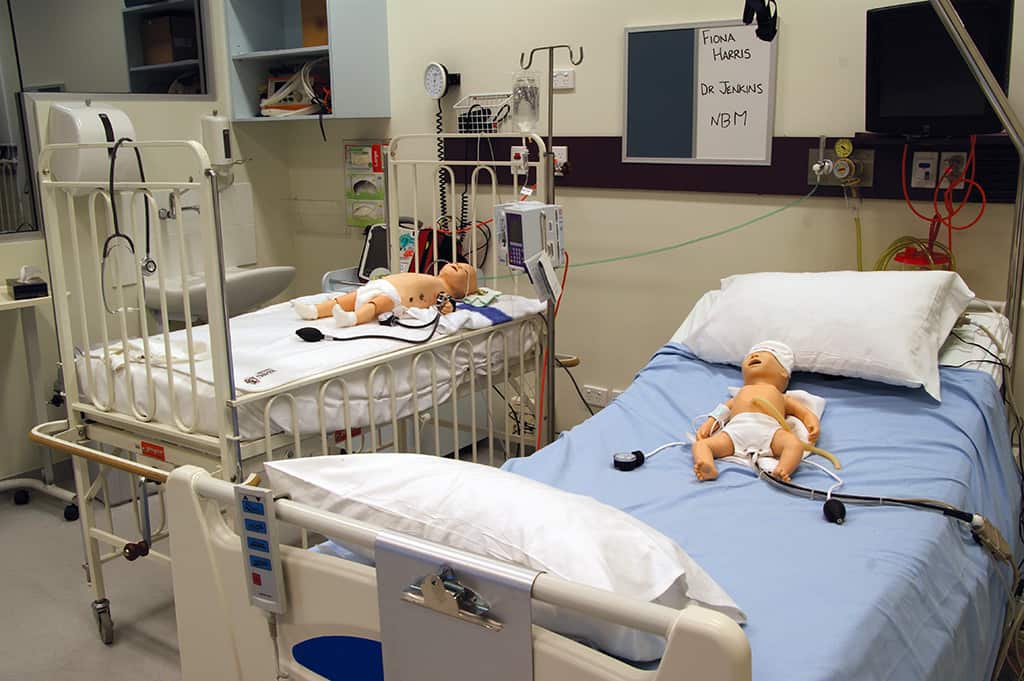
Babies that not even a mother could love – infants Luke and Leia Sim lie abandoned and uncared for in the postnatal simulation suite.
“”
They can create scenarios that involve team work, crisis or conflict management and develop leadership skills among medical teams.
IF PAIN PERSISTS…
There’s another distinct advantage to all of this medical simulation, apart from not having to toe-tag any of the students’ mistakes: The whole virtual environment is also good for digitally recording and documenting the students’ responses – an important element in teaching. It is also a tailor-made opportunity for broadcasting to a wider audience simultaneously and interactively, if needed.
So the job description for the integrators, Vizcom Technologies, wasn’t just to plug in SimMan and make sure his fingers waggle during the next lightning storm. The simulation suites also incorporate an impressive network of AV equipment to capture and transmit everything that happens and allow participation from students and teachers in adjacent classrooms or lecture theatres.
All three of the suites have an adjacent debriefing room with video conference links and large LCD screens. The main rooms each have four PTZ (Pan, Tilt and Zoom controllable) cameras mounted on rails above the bed. There’s also provision for a hand-held camera. Camera output routing is handled by a 16 x 16 AutoPatch router.
Next door is a control room equipped with a pair of 24-inch monitors. One displays a full-screen image of the selected camera, while the other is a quad-split showing the remaining three cameras plus a read-out from the SimMan software. An AMX touch panel and matching AMX matrix processor take care of the routing of the audio and video feeds. These deal with all the necessary signals to and from the simulations suite, the video and audio links between the different simulators and the five Shure wireless microphones that can be distributed among the staff and students. There is also a live or ‘wild’ microphone in the ceiling of the simulators to provide feedback to the Control Room and a reciprocal talkback mic at the operator’s position. Of course, monitor speakers are in both spaces.
Last, and certainly not least, in the Control Room is the console for operating the sim mannequins, which includes the ability to ‘speak’ to the students through SimMan. Scaring the hell out of unsuspecting visitors is apparently a favourite pastime.
The potential combination of teaching conditions is impressive. Connected medical emergencies could be created in the two main suites and the strategy for dealing with them discussed by a controlling group of students in the surgery room. In turn, these three situations could each be streamed to a lecture theatre where a teacher can be either an omnipresent observer, debating each scenario with the class, or even request changes in the simulation, with or without the participating students’ knowledge.
Not surprisingly, archiving every event is a must and for this ECU has tapped into its Starbak video streaming system. VizCom installed a higher resolution encoder than the standard Starbak node for lecture theatres, so that the increased level detail from the simulation system can be archived. At the same time a real-time DVD burner is placed in the signal chain for anyone who wants to create a take-away disc.
The sim mannequins were actually a separately supplied and commissioned product – and you have to agree they’re a pretty impressive product! The integration of the mannequins with all other elements of the audiovisual and data networks in the facility fell squarely on Vizcom’s shoulders.
With all the elements they’ve designed and put in place at the Centre for Excellence in Health Simulation, the methods of teaching aren’t just about fixing broken bones. They can create scenarios that involve team work, crisis or conflict management and develop leadership skills among medical teams.
The concept for this simulation facility is the work of Edith Cowan University’s Professor Cobie Rudd and Associate Professor Christopher Churchouse, who shared a vision that these kinds of simulation suites are the way forward in health and medical education.
There’s no doubt about it, in Joondalup at least, Igor’s out of a job.
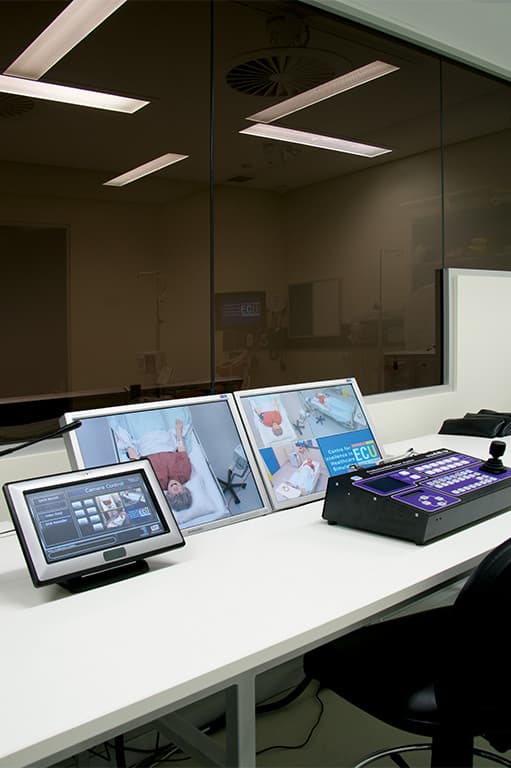
Simulation Central – the control suite for a simulation room.

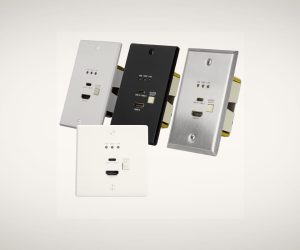
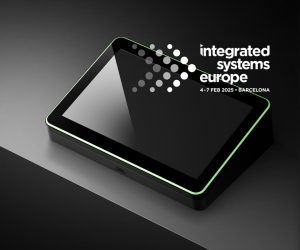
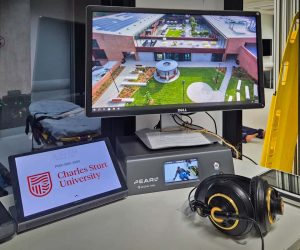





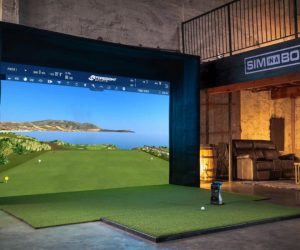
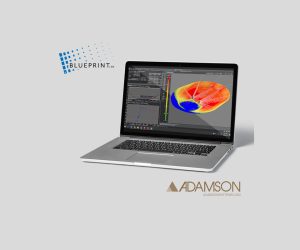
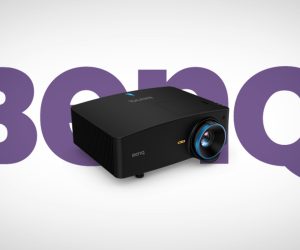



RESPONSES